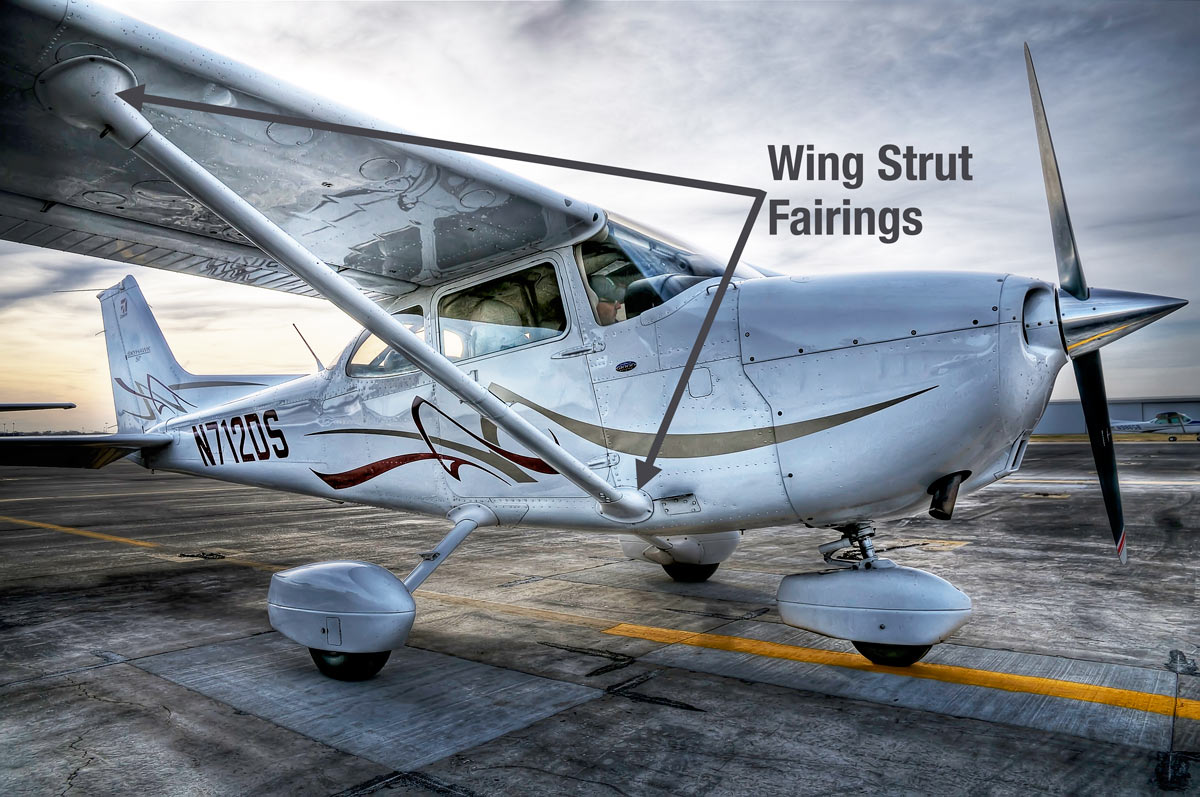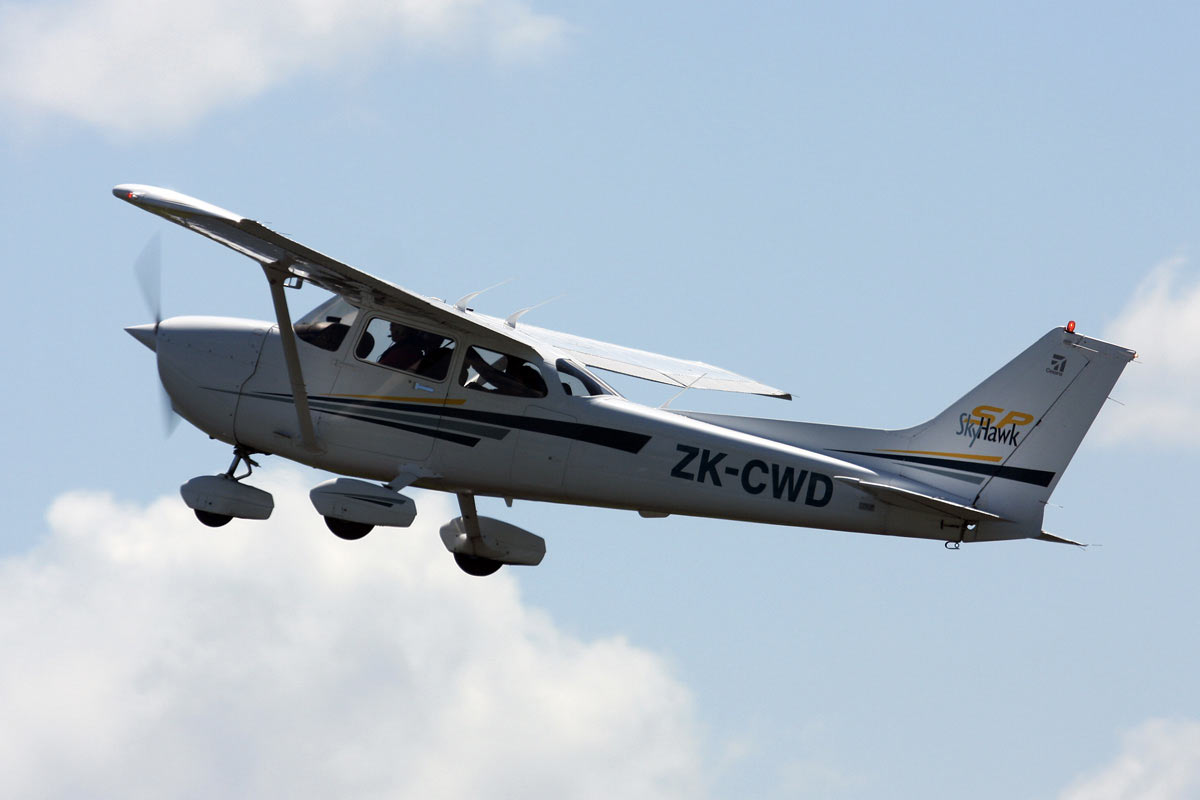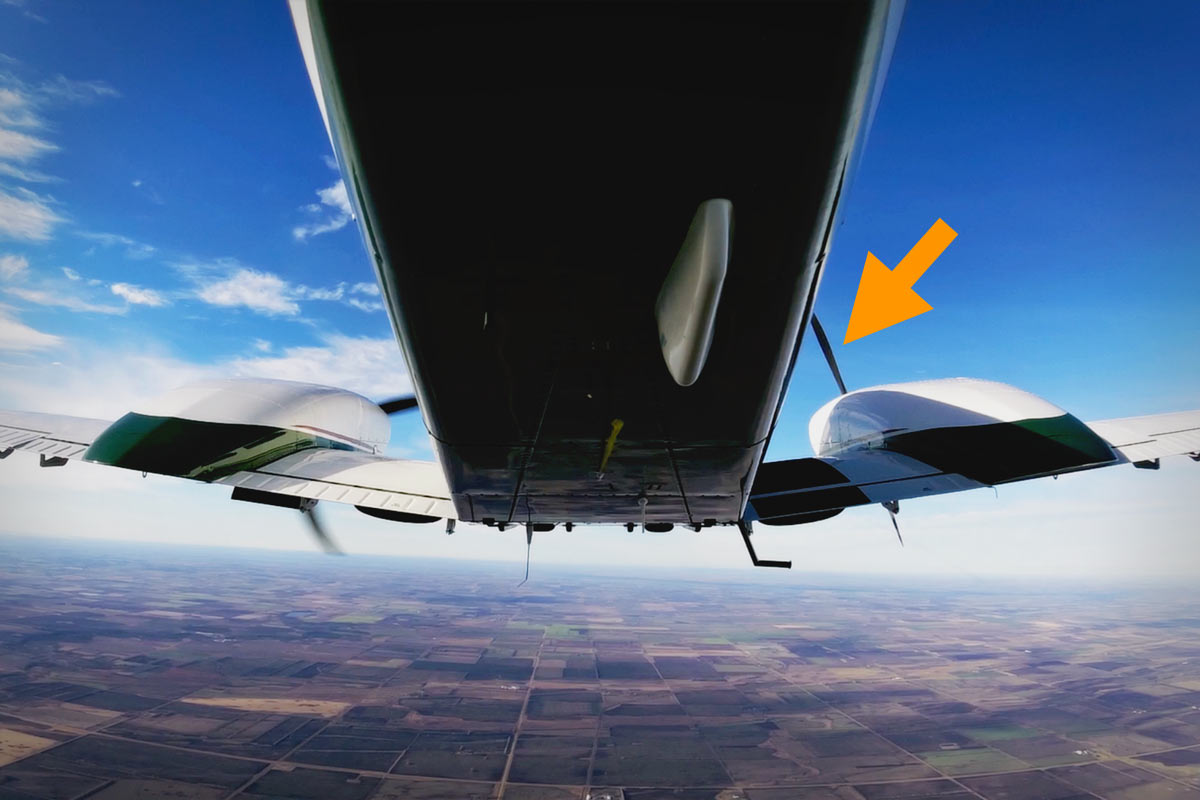Want to fly fast and efficiently? Reducing drag should be one of your top goals. These are some design improvements that counter drag's negative effects on performance.
2) Gap Seals.
The gaps between flight control surfaces and a wing are perfect spots for drag creation. Airflow moves from areas of high pressure to low pressure through these small gaps, making airflow turbulent, and increasing drag.
Some manufacturers install gap seals on their aircraft to counter this problem. They're also available as installation kits for some aircraft.
 Boldmethod
Boldmethod
3) Fairings.
Wherever two surfaces meet, interference drag forms behind the trailing edge of them. This happens on struts, gear, and the wing/fuselage connection point.
Interference drag can be minimized by using fairings to ease the airflow transition between aircraft components.

4) Wheel Pants
In the POH for C172S Skyhawk, the addition of wheel pants increases airspeed by around 2 knots. Their smooth, rounded surfaces allow airflow to move around the struts with less drag created than bare wheels sticking out in the wind.
 wiltshirespotter
wiltshirespotter
5) Winglets.
Winglets are actually little wings that generate lift. And, just like any other wing, they generate lift perpendicular to the relative wind. It might not seem like much, but just a little bit of forward lift helps. It opposes the drag produced by wingtip vortices.
With composites and new manufacturing technology, you can now blend winglets into the wing, significantly reducing interference drag and making the winglets even more efficient.
Learn everything you need to know about how winglets work.
 Jose Luis Celada
Jose Luis Celada
6) Feathering Propellers.
Some constant speed propeller systems allow props to moved into a "feathered" position. Naturally, if free movement was allowed, a propeller would tend to flatten itself into the wind. Think about driving with your hand outside of a car window. The wind naturally wants to flatten your hand into the wind. And when that happens, suddenly it's harder to hold your hand in place.
When feathered, the propeller aligns itself with the wind to ensure the least amount of surface area is exposed. This significantly reduces drag, allowing air to flow past the propeller with minimal interference. This is one reason why you feather the propeller during an engine failure in a multi-engine airplane. It improves glide performance by reducing drag.
 Boldmethod
Boldmethod
What else reduces drag? Tell us in the comments below!
Do you know what you're missing?
Haven't subscribed to our email yet? You're missing a lot of our posts. Sign up for the Boldmethod email now, and get every video, article and quiz, direct to your inbox.
Sign Up with Bothmethod
1) Flush-Mounted Rivets.
Even microscopic changes to the smooth surface of a wing or aircraft fuselage can dramatically increase drag. Rivets are one of the most common drad-inducers. In the picture below, notice the protruding rivets on the wing vs the flush, or recessed, rivets used by engineers to reduce drag as much as possible...
 jay-jerry
jay-jerry
Even microscopic changes to the smooth surface of a wing or aircraft fuselage can dramatically increase drag. Rivets are one of the most common drad-inducers. In the picture below, notice the protruding rivets on the wing vs the flush, or recessed, rivets used by engineers to reduce drag as much as possible...
 jay-jerry
jay-jerry2) Gap Seals.
The gaps between flight control surfaces and a wing are perfect spots for drag creation. Airflow moves from areas of high pressure to low pressure through these small gaps, making airflow turbulent, and increasing drag.
Some manufacturers install gap seals on their aircraft to counter this problem. They're also available as installation kits for some aircraft.
 Boldmethod
Boldmethod3) Fairings.
Wherever two surfaces meet, interference drag forms behind the trailing edge of them. This happens on struts, gear, and the wing/fuselage connection point.
Interference drag can be minimized by using fairings to ease the airflow transition between aircraft components.

4) Wheel Pants
In the POH for C172S Skyhawk, the addition of wheel pants increases airspeed by around 2 knots. Their smooth, rounded surfaces allow airflow to move around the struts with less drag created than bare wheels sticking out in the wind.
 wiltshirespotter
wiltshirespotter5) Winglets.
Winglets are actually little wings that generate lift. And, just like any other wing, they generate lift perpendicular to the relative wind. It might not seem like much, but just a little bit of forward lift helps. It opposes the drag produced by wingtip vortices.
With composites and new manufacturing technology, you can now blend winglets into the wing, significantly reducing interference drag and making the winglets even more efficient.
Learn everything you need to know about how winglets work.
 Jose Luis Celada
Jose Luis Celada6) Feathering Propellers.
Some constant speed propeller systems allow props to moved into a "feathered" position. Naturally, if free movement was allowed, a propeller would tend to flatten itself into the wind. Think about driving with your hand outside of a car window. The wind naturally wants to flatten your hand into the wind. And when that happens, suddenly it's harder to hold your hand in place.
When feathered, the propeller aligns itself with the wind to ensure the least amount of surface area is exposed. This significantly reduces drag, allowing air to flow past the propeller with minimal interference. This is one reason why you feather the propeller during an engine failure in a multi-engine airplane. It improves glide performance by reducing drag.
 Boldmethod
BoldmethodWhat else reduces drag? Tell us in the comments below!
Do you know what you're missing?
Haven't subscribed to our email yet? You're missing a lot of our posts. Sign up for the Boldmethod email now, and get every video, article and quiz, direct to your inbox.
Sign Up with Bothmethod
No comments:
Post a Comment